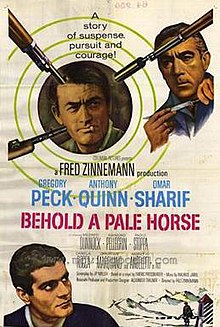
Francisco Franco Bahamonde was a Spanish military general who led the Nationalist forces in overthrowing the Second Spanish Republic during the Spanish Civil War and thereafter ruled over Spain from 1939 to 1975 as a dictator, assuming the title Caudillo. This period in Spanish history, from the Nationalist victory to Franco's death, is commonly known as Francoist Spain or as the Francoist dictatorship.
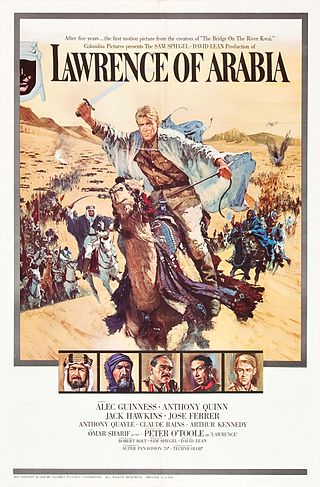
Lawrence of Arabia is a 1962 epic biographical adventure drama film based on the life of T. E. Lawrence and his 1926 book Seven Pillars of Wisdom. It was directed by David Lean and produced by Sam Spiegel through his British company Horizon Pictures and distributed by Columbia Pictures. The film stars Peter O'Toole as Lawrence with Alec Guinness playing Prince Faisal. The film also stars Jack Hawkins, Anthony Quinn, Omar Sharif, Anthony Quayle, Claude Rains and Arthur Kennedy. The screenplay was written by Robert Bolt and Michael Wilson.

Eldred Gregory Peck was an American actor and one of the most popular film stars from the 1940s to the 1970s. In 1999, the American Film Institute named Peck the 12th-greatest male star of Classic Hollywood Cinema.

Alfred Zinnemann was an Austrian-American film director and producer. He won four Academy Awards for directing and producing films in various genres, including thrillers, westerns, film noir and play adaptations. He began his career in Europe before emigrating to the US, where he specialized in shorts before making 25 feature films during his 50-year career.
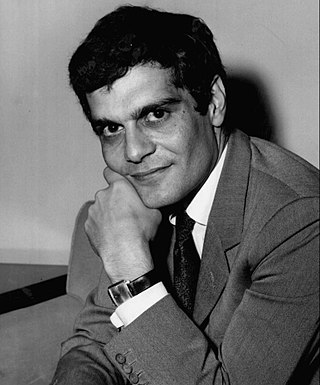
Omar Sharif was an Egyptian actor, generally regarded as one of his country's greatest male film stars. He began his career in his native country in the 1950s. He is best known for his appearances in American, British, French, and Italian productions, and has been described as "the first Egyptian and Arab to conquer Hollywood". His career encompassed over 100 films spanning 50 years, and brought him many accolades including three Golden Globe Awards and a César Award for Best Actor.

Francoist Spain, also known as the Francoist dictatorship, was the period of Spanish history between 1936 and 1975, when Francisco Franco ruled Spain after the Spanish Civil War with the title Caudillo. After his death in 1975 due to heart failure, Spain transitioned into a democracy. During Franco's rule, Spain was officially known as the Spanish State.

Mackenna's Gold is a 1969 American Western film directed by J. Lee Thompson, starring an ensemble cast featuring Gregory Peck, Omar Sharif, Telly Savalas, Ted Cassidy, Camilla Sparv and Julie Newmar in lead roles. It was photographed in Super Panavision 70 and Technicolor by Joseph MacDonald, with original music by Quincy Jones.

Perrette Pradier was a French actress and dubbing director. She is best known for her work as a voice actress which earned her the nickname of "Queen" or "High Priestess" of dubbing.

Carlos Arias Navarro, 1st Marquess of Arias Navarro was the Prime Minister of Spain during the final years of the Francoist dictatorship and the beginning of the Spanish transition to democracy.
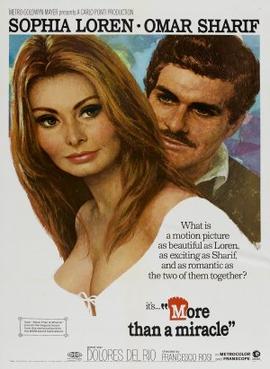
More Than a Miracle is a 1967 film also titled Cinderella Italian Style and Happily Ever After. It stars Sophia Loren, Omar Sharif and Dolores del Río. The movie has a fairy tale narrative. Filmed in the countryside outside Naples, Francesco Rosi directed and Carlo Ponti produced. The theme music was a hit for Roger Williams, reaching #2 on Billboard's survey. Sergio Franchi recorded the title song on his 1968 RCA Victor album, I'm a Fool To Want You.
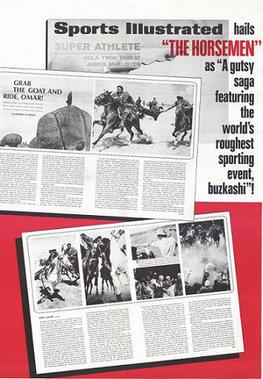
The Horsemen is a 1971 American adventure film starring Omar Sharif, directed by John Frankenheimer; screenplay by Dalton Trumbo. Based on a 1967 novel by French writer Joseph Kessel, Les Cavaliers shows Afghanistan and its people the way they were before the wars that wracked the country, particularly their love for the sport of buzkashi. The film was filmed in Afghanistan and Spain.

El jardín de las delicias, also known as The Garden of Delights in English language cinema, is a 1970 Spanish drama film co-written and directed by Carlos Saura.
The Pact of Forgetting is the political decision by both leftist and rightist parties of Spain to avoid confronting directly the legacy of Francoism after the death of Francisco Franco in 1975. The Pact of Forgetting was an attempt to move on from the Civil War and subsequent repression and to concentrate on the future of Spain. In making a smooth transition from autocracy and totalitarianism to democracy, the Pact ensured that there were no prosecutions for persons responsible for human rights violations or similar crimes committed during the Francoist period. On the other hand, Francoist public memorials, such as the mausoleum of the Valley of the Fallen, fell into disuse for official occasions. Also, the celebration of "Day of Victory" during the Franco era was changed to "Armed Forces Day" so respect was paid to both Nationalist and Republican parties of the Civil War.

La Fabuleuse Aventure de Marco Polo or Marco the Magnificent is a 1965 international co-production adventure film directed by Denys de La Patellière and Noël Howard. Raoul Levy committed suicide in December 1966 after losing most of his fortune financing this film.

Montse Armengou Martín is a Spanish journalist, investigative documentary filmmaker.

And in the Third Year, He Rose Again is a 1980 Spanish comedy film directed by Rafael Gil. It is based on a best-selling novel by Fernando Vizcaíno Casas.
The Sabaté brothers Quico and Pepe were among the famed Catalan Spanish maquis and urban guerrillas of the Francoist post-Civil War period. They participated in an anarchist guerrilla vigilante group of expropriators before the war. Afterward, as maquis, they turned their focus from unlikely anarchist mass insurrection to converting others to anti-Francoism.
A War in Hollywood is a 2008 Spanish documentary biography historical film directed by Oriol Porta. It is about the Spanish Civil War which affected Hollywood artists such as Alvah Bessie.
Black Bread is a semi-autobiographical novel published by the Catalan pedagogue, journalist and writer, Emili Teixidor i Viladecàs in 2003, when the author was seventy years old, it describes the coming of age of a young boy in the repressive aftermath of the Spanish Civil War in rural Catalonia.
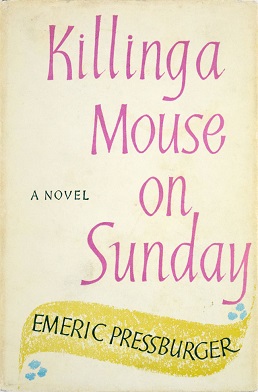
Killing a Mouse on Sunday is a 1961 thriller novel by the British-Hungarian writer Emeric Pressburger, best known as a film producer. In Francoist Spain a Civil Guard officer attempts to lure a notorious exiled guerilla fighter back across the border from France.
